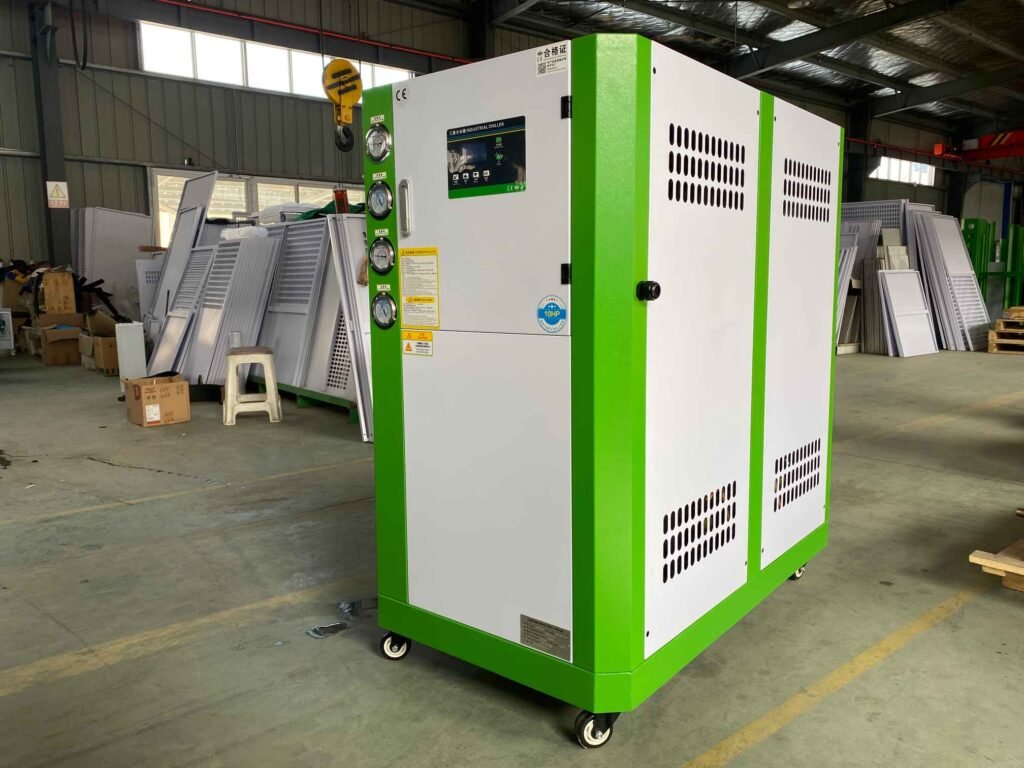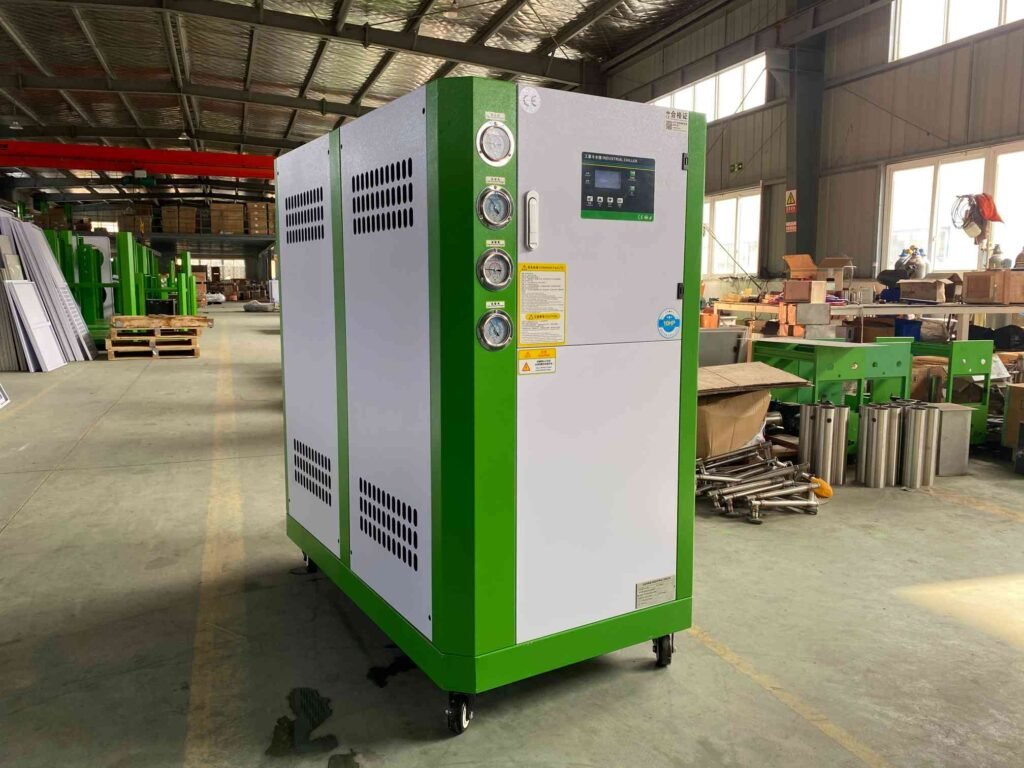How industrial water chillers work
Components
It is important to know the main parts of an industrial water chiller. These parts work together to keep things cool. Each part helps move heat away from your process fluids. Most cooling systems have these key parts:
Kompressor: This part is like the heart of the system. It pushes refrigerant through the chiller. It also makes the refrigerant’s pressure higher.
Verdampfer: The refrigerant takes heat from the water or fluid here. The fluid gets cooler as the refrigerant turns into a gas.
Verflüssiger: The condenser lets the refrigerant give off its heat. In water-cooled chillers, water takes this heat away. In air-cooled chillers, air blows the heat away.
Expansionsventil: This valve controls how much refrigerant goes into the evaporator. It lowers the refrigerant’s pressure so it can take in more heat.
Tip: To keep your industrial chiller working well, check these parts often. Good maintenance stops breakdowns and saves energy.
Cooling process
The cooling starts when warm fluid goes into the evaporator. The refrigerant inside takes heat from the fluid. When the refrigerant gets hot, it turns into a gas. The compressor moves this hot gas to the condenser.
In the condenser, the refrigerant gives off its heat. If you use a water-cooled chiller, water flows through and takes the heat away. If you use an air-cooled chiller, fans blow air over the coils to remove the heat. The refrigerant cools down and becomes a liquid again.
The expansion valve lowers the refrigerant’s pressure. This gets the refrigerant ready to take in more heat in the evaporator. The cycle keeps going, so your fluid stays at the right temperature.
Water works as a secondary refrigerant in this system. It moves heat from your process to the chiller. Then the refrigerant takes the heat from the water. This makes the industrial water chiller a good choice for many cooling systems.
Note: You can use an industrial water chiller in many places, like plastics factories or food plants. The cooling process protects your equipment and helps keep products good.

Comparison with other chillers
You might wonder how an industrial water chiller is different from other chillers. The main difference is how each chiller removes heat and where you use them.
| Chiller Type | Cooling Medium | Typische Anwendungen | Cooling Capacity | Maintenance Needs |
|---|---|---|---|---|
| Industrial water chiller | Wasser | Large factories, HVACR, district cooling | High | Moderate |
| Luftgekühlte Kältemaschine | Air | Small to medium buildings, temporary setups | Medium | Low |
| Absorption chiller | Water/Steam | Facilities with waste heat | Variable | High |
An wassergekühlte Kältemaschinen cools more than an air-cooled chiller. It works best for big jobs that need strong cooling. Water-cooled chillers use water to take away heat, so they save energy in many cases. Air-cooled chillers use air, so they are good for places with little water or where you need something easy to move.
If you need a chiller for heavy work and long hours, pick an industrial water chiller. If you want something simple and easy to care for, an air-cooled chiller may be better. If your facility has waste heat, absorption chillers can help in special ways.
Remember: The best chiller depends on what you need, what you have, and your future plans. Think about how big your job is and how much efficiency you want.
Industrial chiller applications and types
Industrial water chiller uses
Industrial water chillers are used in many industries. These cooling systems help control temperature in big buildings and factories. In HVACR, an industrial water chiller keeps air cool in offices and stores. District cooling systems use these chillers to cool many buildings together. Food processing plants use them to keep food fresh and safe. You also find them in plastics, pharmaceuticals, and metal finishing. Each job needs steady cooling to protect machines and make products better.
Tip: Use a reliable chiller system to stop downtime in your work.
Types of industrial chillers
There are different types of industrial chillers you can pick. The main types are water-cooled and air-cooled chillers. Water-cooled chillers use water to take away heat. These work best where there is lots of water and big cooling needs. Air-cooled chillers use fans to move heat into the air. These are easier to set up and need less care. Some places use absorption chillers, which use heat instead of electricity for cooling.
| Chiller Type | Cooling Method | Best For |
|---|---|---|
| Water-cooled | Wasser | Large, permanent setups |
| Air-cooled | Air | Portable or small sites |
| Absorption | Heat | Sites with waste heat |

Choosing the right chiller
You should match your chiller to your job. First, check how much cooling you need. Think about your space, water supply, and energy use. Water-cooled chillers save more energy for big jobs. Air-cooled chillers are good if you want something simple and easy to move. Always look at how much care it needs and the total cost over time.
Note: Picking the right chiller helps your work run well and saves money later.
Technological advancements
Modern industrial water chillers have smart controls and stronger parts. You can watch your cooling system with digital sensors. Some industrial chillers use variable speed drives to change power use. These things help you save energy and lower costs. New designs also use eco-friendly refrigerants. You get better cooling and help the planet too.
Schlussfolgerung
Industrial water chillers help your work stay safe and run well. They take heat away from fluids and keep machines safe. When you pick a Industriekühler, make sure it fits your needs. Look at new technology to help your chiller work better and reach your business goals.
